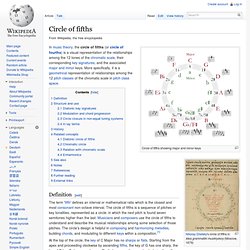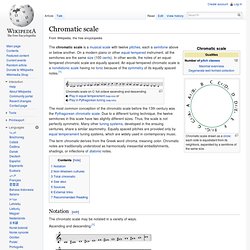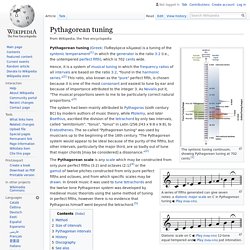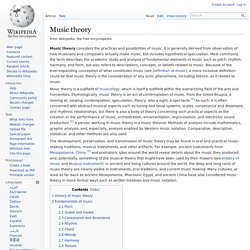

The Unanswered Question 1973 1 Musical Phonology Bernstein Norton. Music, Fibonacci numbers and relationships to Phi. Musical scales are based on Fibonacci numbers The Fibonacci series appears in the foundation of aspects of art, beauty and life. Even music has a foundation in the series, as: There are 13 notes in the span of any note through its octave.A scale is composed of 8 notes, of which the5th and 3rd notes create the basic foundation of all chords, andare based on a tone which are combination of 2 steps and 1 step from the root tone, that is the 1st note of the scale. Note too how the piano keyboard scale of C to C above of 13 keys has 8 white keys and 5 black keys, split into groups of 3 and 2.While some might “note” that there are only 12 “notes” in the scale, if you don’t have a root and octave, a start and an end, you have no means of calculating the gradations in between, so this 13th note as the octave is essential to computing the frequencies of the other notes.
Musical frequencies are based on Fibonacci ratios * A440 is an arbitrary standard. Be Sociable. Circle of fifths. Circle of fifths showing major and minor keys Nikolay Diletsky's circle of fifths in Idea grammatiki musikiyskoy (Moscow, 1679) In music theory, the circle of fifths (or circle of fourths) is a visual representation of the relationships among the 12 tones of the chromatic scale, their corresponding key signatures, and the associated major and minor keys.

More specifically, it is a geometrical representation of relationships among the 12 pitch classes of the chromatic scale in pitch class space. Definition[edit] Structure and use[edit] Pitches within the chromatic scale are related not only by the number of semitones between them within the chromatic scale, but also related harmonically within the circle of fifths. Octaves (7 × 1200 = 8400) versus fifths (12 × 700 = 8400), depicted as with Cuisenaire rods (red (2) is used for 1200, black (7) is used for 700).
Diatonic key signatures[edit] The circle is commonly used to represent the relationship between diatonic scales. Play . History[edit] . Harmonic series (music) Harmonic series of a string with terms written as reciprocals (2/1 written as 1/2).

A harmonic series is the sequence of all multiples of a base frequency. Any complex tone "can be described as a combination of many simple periodic waves (i.e., sine waves) or partials, each with its own frequency of vibration, amplitude, and phase. "[1] (Fourier analysis) A partial is any of the sine waves by which a complex tone is described. A harmonic (or a harmonic partial) is any of a set of partials that are whole number multiples of a common fundamental frequency.[2] This set includes the fundamental, which is a whole number multiple of itself (1 times itself).
Typical pitched instruments are designed to have partials that are close to being harmonics, with very low inharmonicity; therefore, in music theory, and in instrument tuning, it is convenient to speak of the partials in those instruments' sounds as harmonics, even if they have some inharmonicity. Chromatic scale. Chromatic scale drawn as a circle: each note is equidistant from its neighbors, separated by a semitone of the same size.

The most common conception of the chromatic scale before the 13th century was the Pythagorean chromatic scale. Due to a different tuning technique, the twelve semitones in this scale have two slightly different sizes. Thus, the scale is not perfectly symmetric. Many other tuning systems, developed in the ensuing centuries, share a similar asymmetry. Equally spaced pitches are provided only by equal temperament tuning systems, which are widely used in contemporary music. The term chromatic derives from the Greek word chroma, meaning color. Pythagorean tuning. The syntonic tuning continuum, showing Pythagorean tuning at 702 cents.[1] Diatonic scale on C Play 12-tone equal tempered and Play just intonation.

Pythagorean (tonic) major chord on C Play (compare Play equal tempered and Play just). Comparison of equal-tempered (black) and Pythagorean (green) intervals showing the relationship between frequency ratio and the intervals' values, in cents. The system had been mainly attributed to Pythagoras (sixth century BC) by modern authors of music theory, while Ptolemy, and later Boethius, ascribed the division of the tetrachord by only two intervals, called "semitonium", "tonus", "tonus" in Latin (256:243 x 9:8 x 9:8), to Eratosthenes. Method[edit] Pythagorean tuning is based on a stack of intervals called perfect fifths, each tuned in the ratio 3:2, the next simplest ratio after 2:1.
This succession of eleven 3:2 intervals spans across a wide range of frequency (on a piano keyboard, it encompasses 77 keys). Size of intervals[edit] (e.g. between E♭ and E) Music theory. Music theory considers the practices and possibilities of music.

It is generally derived from observation of how musicians and composers actually make music, but includes hypothetical speculation.